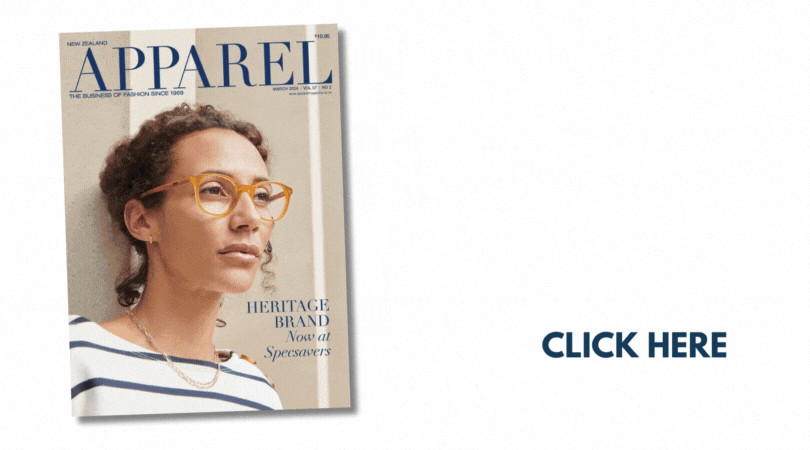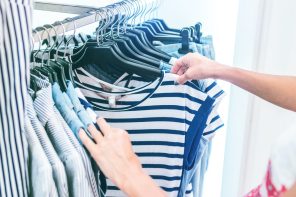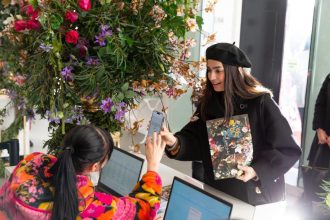"Sustainable fashion. Producing in a way that can be sustained. Counter balancing what you take and the impact you make. Not depleting or damaging resources. Treading lightly. Caring for and supporting the entire supply chain of people who make your product. A seemingly easy ask from the outside looking in, but for a large established brand hoping to shift to this, it has been most fittingly described by Positive Luxury founder Diana Verde Nieto as “…changing the engine of a 747 mid-flight.” So what’s the current climate of the industry, what can drive the change and where is it all headed?
The future of fashion looks different. As the future of our lives look different, in every way. Five years ago we didn’t have Deliveroo. In three years we will have fully automated self-driving cars. Offices are downsizing and becoming less relevant as we change the way we work. Entire companies are now built without any employees working in the same location. There is a multi-faceted movement towards owning less, and borrowing more. So it is precarious to consider the future of fashion isn’t also radically changing. To find solutions to the now fragile wholesale business model, the industry needs to really understand how people like to do life. Then, relate that to the psychology behind shopping patterns and begin to see how the shift in everything else correlates with fashion.
Although not a new concept, sustainable fashion is still a subjective term. It can be interpreted widely. Sometimes, sadly, holding no weight or meaning at all. The most distressing issue prevalent is greenwashing. Greenwashing is where companies claim to be operating sustainably in order to boost reputation and therefore drive sales. No policy exists in fashion to give any incentive for companies to do the work before declaring themselves ethical or sustainable. Therefore, the research responsibility sits with the customer. Which is ludicrous. Comparatively, the food industry has very strict regulation around labelling, with brands required to meet extensive criteria before making health claims, or using terms like ‘organic’. The difference? The purchase decision is easier. And in an age where things are getting more efficient, and purchasing anything we want is most literally at our fingertips, genuine sustainable brands are getting lost in the chaos.
So sustainability is subjective, and we need to be diligent in what we believe when brands claim this title, but to simplify the mess we can choose to focus on one element of fashion production that is meaningful to us. We can’t simply rely on what we are told is ‘right’. The information and science is continuously being updated. For example, when it first hit the market, designers (including myself) went nuts for bamboo fabric. It wasn’t until the research evidence came in a couple of years later that we learnt bamboo wasn’t a good solution or alternative at all (mainly due to large quantities of chemicals needed to make it wearable). Experts have varying opinions to seemingly eco options such as; natural dyes (due to water consumption), organic cotton (land usage), ‘vegan leather’ (most commercially made from plastic), and the list continues. The answer - we need to choose our battles and identify with what is most important to us. For example, avoiding plastic is a priority to me. I do not support the leather trade, but I would rather purchase vintage or second-hand leather boots than buy virgin plastic ‘vegan leather’ products. Once you can create this set of beliefs for yourself, you can start to find brands and products that align with your values.
With the confusion of what truly is sustainable, my personal solution lies in vintage and hiring. Supporting vintage puts emphasis on stopping the unnecessary creation of new products - when the world is drowning in unwanted goods. It is also a decision based on quality, as ‘they just don’t make it like they used to’ rings frighteningly true. The explosion of hiring companies is testament to a world in which we don’t necessarily see the value in having more stuff (Note: Marie Kondo). Wardrobes so crammed we can hardly see what we own, items we have forgotten about for years, pieces with tags still attached - the sight of them holding the guilt of the money spent and wasted. The common theme with these two options? Having less. Wasting less. Producing less. Whilst still getting that endorphin kick of wearing something beautiful.
Hiring is a fascinating option. This once daggy ideal is becoming popular in regions such as Asia, where people generally have the means to be buying luxury, but do not have the space in their apartments to store it. They gain the flexibility to wear a different designer outfit every day of the week, and lose the hassle of storing or dry-cleaning it. In a world where people don’t want to be seen wearing the same thing twice, it’s a win-win. Luxury brands, which were until very recently against hiring (the same way in which brands were at first hesitant to shift to having an online store), are planning how they can work this into their business model for the future. The industry is seeing the hiring demand shift from occasion wear to the career individual, where the customer is hiring pieces for the five-day working week. The concept of this thrills me. Especially where a corporate wardrobe cannot be incorporated into everyday wear. The space this would save in the modern wardrobe is something worth celebrating. Filippa K’s head of sustainability spoke at Premiere Vision in Paris last September, and she painted a picture of what the near future will look like in fashion. The part that stuck with me described going on a weekend trip, and not taking a suitcase. Simply ordering what clothes you would like whilst at the airport, and they are packed and ready for you when you arrive at your destination. You then drop them back to the airport after your journey. A lot like hiring a car. Convenience at its finest. This is a clear example of being honest with how people like to do life. To believe everyone will switch to having a minimalist wardrobe of five pieces is unrealistic, and frankly not very fun.
The beauty of the ongoing ethical and environmental disaster of fashion production is it has brought a previously cagey and secretive industry together. Previous competitors realising the best way forward is to pool resources, share learning and create initiatives and common goals for the future. I saw this first hand as part of the British Fashion Council's Positive Fashion committee. Sitting with representatives from brands such as Vivienne Westwood, powerhouses such as Kering, and high street (or department store) institutions such as M&S. all who sit in a room as peers, and discuss ways in which they can do better.
The future of fashion is bright. It is smarter. It is more efficient. It is exciting. Customers care. Brands see the importance in this. Policy needs to implemented. Poor quality pieces need to stop being produced, especially on mass. We do not need more crap. Research. Ask questions. Create your own set of values. Buy something you will wear at least thirty times. Hire pieces you only want to wear once. It doesn’t need to be complicated. You don’t need to be an expert. Buy less, choose well. We drive the change."






